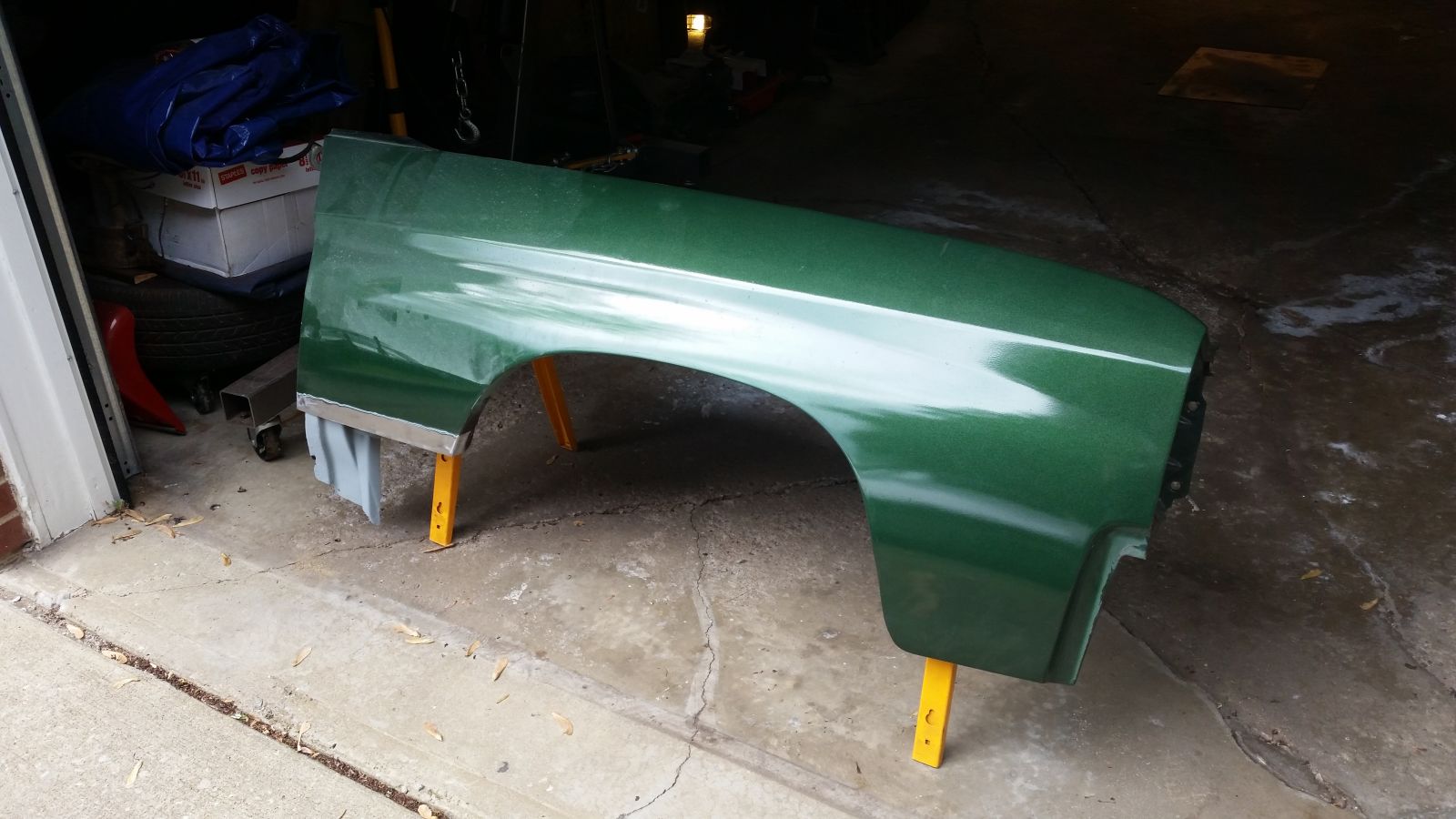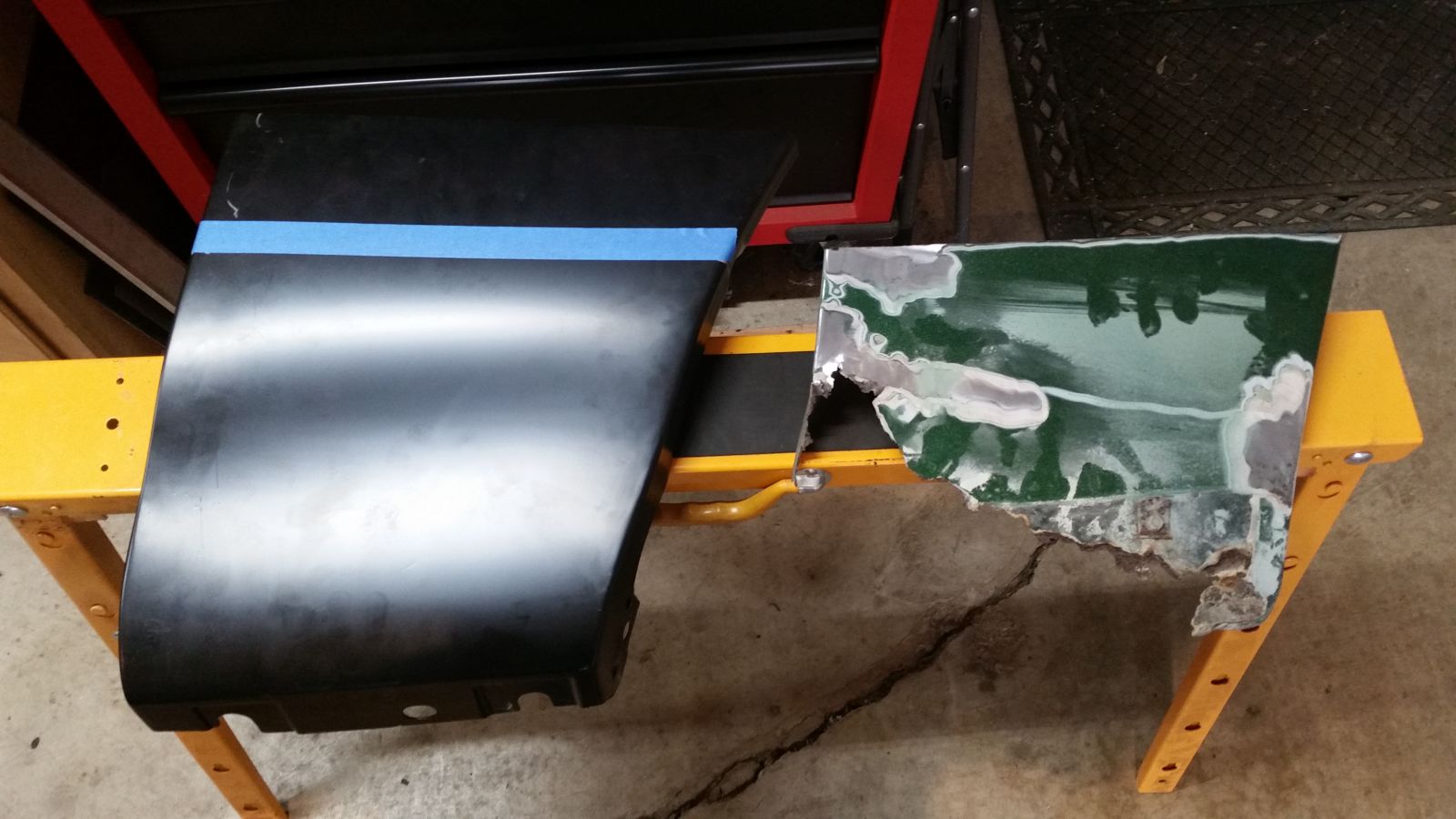
At some point before my ownership, the Chevelle was repainted. Whoever did this also decided that they could just bondo over rust to ‘fix’ it, which in the long term only made it worse, in the way that it does. Fortunately, from all I can find this seems to be isolated to behind the front wheels and the rear wheel wells.

Starting on this corner, I’ve cut out the rusted sheet metal skin, separating it from the support structure (it was mostly released on its own). That support structure has been trimmed and cleaned up (and hit with weld-through primer), and once the new skin is in place will be repaired to actually support the skin. The skin patch has been cut to “a bit too big” - the next step is trimming it to be “the right size” and tacking it in place (this takes place with the fender on the car).